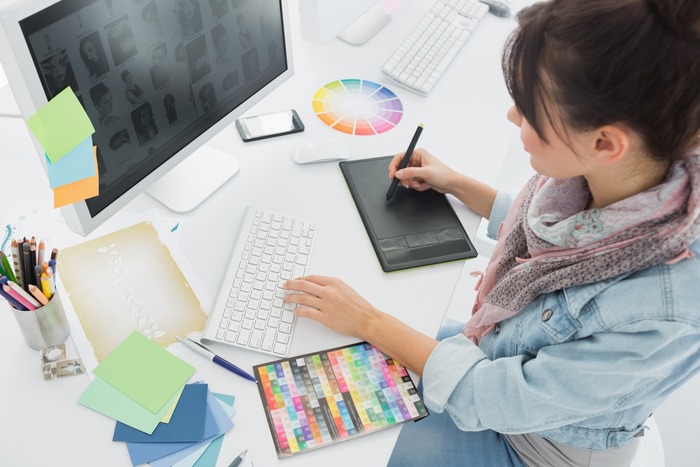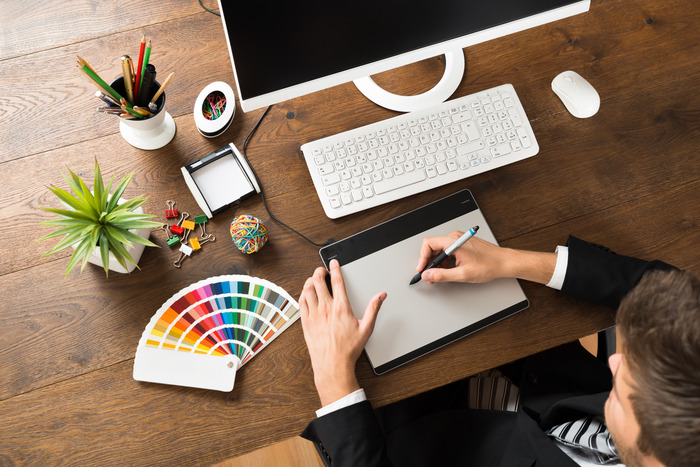There’s this moment a lot of designers don’t talk about. The quiet pause after your computer screen goes dark for the night, when you realize you spent ten hours moving a logo five pixels to the left. Again. And no one will ever know.
Graphic design can feel like a fast, fun job from the outside—bright colors, trendy fonts, all that—but anyone who’s actually in the thick of it knows better. There’s so much that goes into keeping up, staying inspired, and producing work that doesn’t look like it got slapped together with an app and wishful thinking.
And yet, the difference between just “doing design” and actually owning your role as a real designer doesn’t come from a fancy degree or the biggest clients. It’s about the stuff you reach for every single day. The tools. The habits.
The hidden add-ons and practices that turn a good designer into someone people trust with the real projects. So if you’re calling yourself a graphic designer, whether full-time or freelance or somewhere in between, ask yourself—do you have everything you really need?
Good Lighting Isn’t Optional—It’s Part Of The Work
A lot of people think lighting only matters if you’re painting or photographing or maybe filming something, but graphic design? You’re on a screen. So who cares, right? Except poor lighting messes with everything. Your colors look off.
Your eyes get tired faster. You start making weird choices just to get through the day. It’s easy to ignore until you’re editing something at night, and suddenly everything that looked good in the morning now feels wrong.
Natural light is great when you can get it. But what you really want is consistent light that doesn’t cast harsh shadows or make your screen feel like it’s glowing from inside a cave. People underestimate how much good lighting can change their whole creative flow.
It doesn’t just make your workspace look cooler—it makes your work better. And if you’re serious about keeping your colors accurate and your brain focused, you’ll stop thinking of lighting as a background thing and start treating it like part of your setup.
You’ll Design Faster (And Smarter) With The Color Wheel Calculator
There are some tools you don’t know you need until you finally use them. The color wheel calculator is one of those. It’s the kind of thing that sounds small, maybe even silly, but the first time you’re working on a project with weird branding rules or client-provided tones that don’t play well together, this little tool will save your life.
Instead of guessing or eyeballing complementary tones and trying to fake your way through it, you just plug it in. Done. You’re working with balanced, thoughtful combinations that look intentional.
But the real magic? It makes you faster. Not sloppier—just more confident. You don’t second-guess every shade. You don’t spiral into that color picker’s rabbit hole where three hours vanish and you still hate the palette. It’s like your cheat code for good design choices that don’t come off as generic.
And once you’ve got it, you’ll wonder how you ever worked without it. It doesn’t just help you make things look nice. It helps you think like a designer who actually knows what they’re doing.
A Blank Sketchpad Keeps Your Brain From Going Mushy
It sounds old school. It sounds slow. And it definitely sounds like something that doesn’t belong in the middle of your high-speed, screen-heavy day.
But keeping a blank sketchpad nearby is the kind of low-effort, high-reward habit that quietly separates the people who design because they love it from the people who are just clicking things until the client says stop. It’s not about drawing perfectly. It’s not about filling it with masterpieces. It’s about giving your mind a way to breathe.
When you’re stuck or your creativity starts to freeze up, opening a blank document on your computer is not going to save you. But scribbling shapes or testing layout ideas by hand somehow resets the whole engine. It wakes your brain up.
It reminds you that you’re allowed to play again. Some of the best ideas don’t start on a screen at all. Especially when you’re designing for new media, for odd-shaped packaging, or even for tech in the entertainment industry where the canvas is never standard size, paper gives you freedom you forgot you missed. You won’t use it every day, but on the days you need it, nothing else works the same way.
Fonts Are Easy To Collect But Harder To Actually Understand
Designers love collecting fonts. We hoard them like digital goblins. But knowing how to use them—how to really use them—is something different. There’s this temptation to just grab the freshest, most interesting typeface and let it carry the whole design.
Sometimes it works. Most of the time, it doesn’t. Because fonts aren’t outfits. You can’t just change them out and expect the personality of the project to stay the same. Fonts shape meaning. They influence voice, emotion, mood—sometimes more than the words themselves.
So what do you actually need? A handful of reliable go-to fonts you’ve worked with long enough to know them inside and out. The ones you know how to pair. The ones that behave on screens and on print. And, yes, a growing archive of wild, fun options that keep your work from going stale.
But you can’t lean on trends every time. That’s when everything starts to feel like it was made from the same template. If you want your design to stand out, you’ve got to get to know your fonts the way musicians know their instruments. That means practice. Testing. Failing a few times. You’ll get better. But only if you care.
No One Talks About File Hygiene, But It Will Save Your Career
It doesn’t matter how good your work is if you can’t find it later. Or if it breaks when someone else opens it. Or if your layers are labeled things like “finalfinalFORREALTHISONE.”
File hygiene is boring. It’s not creative. It doesn’t feel exciting. But once you’ve lost a project an hour before deadline or sent a corrupted file to a paying client, you learn real quick how much this stuff matters.
Keep your folders organized. Save different versions of your work at smart checkpoints. Name your layers. Back up your files. These habits don’t just keep your computer neat—they keep your reputation intact.
If you want to be seen as someone people can count on, start by acting like someone who cares about how they handle their own work. It’s the unspoken rule of every working designer. Respect your files, and your files will respect you back.
The Final Pixel
Being a graphic designer isn’t about chasing trends or knowing every keyboard shortcut. It’s about building a creative life that supports you, day after day, whether inspiration hits or not. The tools and habits that get you there aren’t always flashy.
But they are the ones that make the difference. You already know how to make things look good. Now make sure you’ve got what you need to keep going.


